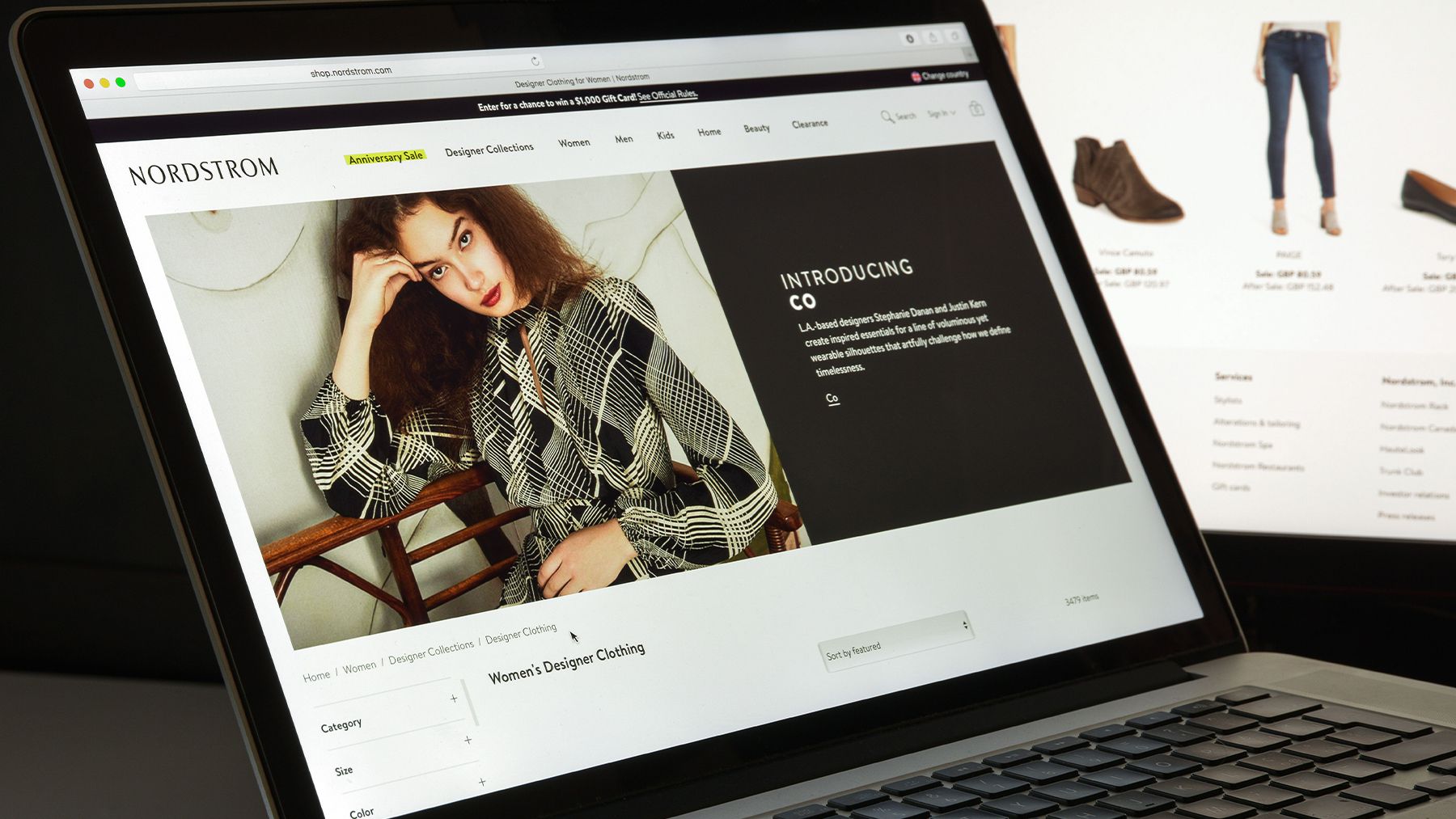
For years, Amazon tried to resemble a fashion retailer, attempting to bring an elevated, curated feel to its platform to convince shoppers it was a fashion destination. But now, it’s fashion retailers that are taking a page out of Amazon’s playbook.
Earlier this month, Nordstrom, following the lead of not only Amazon but other retailers like Walmart, CVS and Target, became the first major fashion retailer to launch an official in-house media network. This new digital advertising arm allows brands to purchase advertising space on Nordstrom’s owned e-commerce platform, bringing participating fashion and beauty brands to the forefront of shoppers’ minds when they’re searching Nordstrom’s site.
For Nordstrom itself, it presents an unmatched opportunity to drive high-margin revenues.
Nordstrom quietly launched its Media Network in the fourth quarter of 2021, announcing it more publicly in March to coincide with its earnings release, with hundreds of brands signed on to participate, including Reiss, Vince, Ted Baker, Free People, Ramy Brook and Adidas. Through the program, Nordstrom drove $40 million in revenue in 2021.
That figure represents just a fraction of the larger $100 billion market opportunity.
Pressures in the digital advertising space are increasing, due to both rising costs and new data privacy rules that make ad targeting more difficult. Rather than trying to make sense of ever-murkier customer data from Google, Facebook and Amazon, media networks offer retailers the ability to instead grab coveted first-party data themselves. The benefit for fashion and beauty brands advertising on retailer platforms — as opposed to more broadly across the internet — is that they are able to get in front of consumers when their intent to shop is higher, that is, on the retailer’s website itself.
“Retailers with first-party data … are the future of targeting because those audiences become viable in a world where third-party cookies go away,” said Nich Weinheimer, general manager of strategy and commerce at marketing platform Skai. “If the retailer owns that ad stack and the retailer is serving the ad, it can target the retailer’s specific users and that’s gold for the brands.”
If a retailer can make their media network work, the financial potential is substantial: In February, Amazon revealed that its ad business made the company $31 billion in 2021, its fourth-quarter revenue up 32 percent. But fashion retailers considering launching media networks should act before it’s too late to seize sizable market share and ad dollars. According to a 2021 report from the Boston Consulting Group, the “top three or so companies in each submarket will dominate, while others will find themselves largely shut out. Time is short for those that want to play.”
How It Works
Nordstrom’s initial media network offering includes sponsored product ads on its website that appear alongside non-sponsored results, dedicated brand pages and “off-site” options like video, paid social, direct mail and display ads that will appear elsewhere on the internet.
Right now, only brands Nordstrom stocks have access to these options, but eventually, Nordstrom plans to make its advertising network available to brands that it doesn’t stock but “that we think our customers would be interested in,” said Deniz Anders, Nordstrom vice president of brand and digital marketing.
As retailers like Nordstrom evolve their advertising offerings, they will transform from manual operations to more automated — in industry-speak, programmatic — ad buys that are triggered by real-time changes in the market using ad tech software.
Ad networks like Nordstrom’s offer brands an opportunity to compete across different multi-brand fashion retailers in a new way. Say searches for denim are up across retailers with one high-ranking denim brand in particular sold out on a retailer’s website; a competing brand that advertises on that retailer’s website would be able to move advertising spend over to that platform and get in front of consumers who are searching for denim, likely with an intent to purchase, and try to capture new customers and steal market share, said Weinheimer.
While much attention has been paid to the cost of advertising on Facebook and Google — where high demand fueled high costs with mixed efficiency — the cost to advertise on a fashion retailer’s advertising platform will likely be subject to the same auction-style dynamics across paid search ads. And just like with social media and other digital platforms like Facebook, Google, and Amazon, fashion retailers will own the data that indicates how effective the marketing is.
Anders said that Nordstrom has built internal reporting tools that will allow it to be “transparent” with brand partners in sharing marketing performance data and key metrics. While purchasing ad space on a retailer’s website shouldn’t completely replace a brand’s digital marketing spend on other platforms, it can help them more efficiently reach consumers — or increase the lifetime value of existing customers — at a time when targeting on social media is becoming more difficult.
“Ultimately, we’re here to drive traffic and sales, but sometimes it’s brand awareness and … other brand health metrics for these brands,” Anders said. “We’re really just trying to provide as much transparency and reporting as possible. That’s easier to do these days when we are in our own ecosystem.”
A Considered Approach
Although fashion retailers face mounting pressure to build up advertising divisions, retail media networks don’t pop up overnight. It’s not a coincidence that the majority of retailers that have done so — such as Target or Walmart — are behemoths with large workforces and resources to implement and manage these networks.
In creating their own media network, retailers must make several decisions to determine how it will operate. A major consideration is how much of the network — such as the advertising technology platform itself and the technology that allows for measurement and reporting — they will build out themselves and where they will need to bring on third-party partners to fill in the gaps. They also must determine what services to offer within the network and what should exist as part of the retailer’s broader marketing department.
Once a retailer actually launches its advertising division, there will be a temptation to grow the ad business as quickly as possible to absorb the biggest share of marketing dollars across fashion categories. But in doing so, they risk diluting the customer experience on their own platform, pummeling shoppers with ads for the highest bidders rather than signalling the curation and taste that shoppers hope to find when they visit multi-brand retailers’ sites in the first place.
Instead, retailers should resist flooding their website search results for products with sponsored ads. They might also consider advertising formats — like designated brand landing pages — that make storytelling clear.
“Nobody wants to search and see nothing but sponsored ads on the site. That’s not our job,” Anders said.


